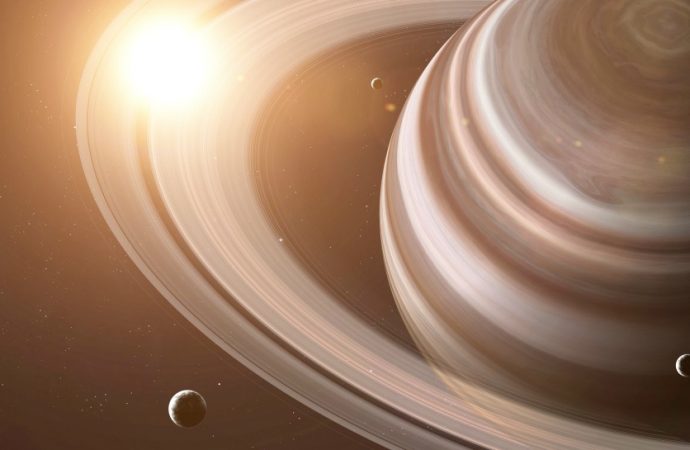Astrobiologists think Titan’s unique atmosphere might be able to hold and sustain life.
Titan, one of Saturn’s moons, is one of the remotest and strangest places in the solar system. Yet, with its extremely cold temperatures reaching a chilly -180 degrees Celsius, some scientists speculate the conditions might be right for cold-adapted alien life to be found there.
Astrobiologists think Titan’s unique atmosphere, which provides similar surface pressures as Earth, could provide the mechanics to support alien life. According to research published this week in the Proceedings of the National Academy of Sciences, Martin Rahm theorizes the moon’s atmosphere can absorb energy from the distant sun because of a specific chemical composition.

Scientists have been trying to understand what ingredients are needed to create ideal prebiotic conditions. One chemical in particular, hydrogen cyanide, is likely one of the catalysts for life.Within the data collected during the Cassini and Huygens missions, scientists found evidence of hydrogen cyanide in Titan’s atmosphere. Although the substance can react with itself, it also has the natural ability to combine with other molecules and create polymers that are more complex. One in particular is known as polyimine.
Linked together in a row, hydrogen cyanide consists of hydrogen, carbon, and nitrogen. While the chemical is just as important to life as proteins and DNA, cyanides are tremendously toxic.
Using complex mechanical calculations, researchers are confident that polyimine has certain properties allowing it to enable prebiotic chemistry at very cold temperatures.
“Possibilities like this… are very speculative and intended as a suggestion of the kinds of structures that might occur, rather than a specific prediction,” the authors wrote. “Because they are impossible to form naturally in a warmer world containing water and oxygen, only future exploratory missions to Titan can test the hypothesis that natural chemical systems evolve chemical complexity in almost any circumstance.”
Polyimine has the ability to absorb a wide spectrum of light, even wavelengths that can pierce Titan’s thick atmosphere. Once this light source reaches the surface, the polyimine can use the energy for the chemical reaction to produce alien life on Titan’s surface.
“We are not saying we created Titan life in a computer, or even structures that might be in life on Titan,” Jonathan Lunine, a planetary scientist at Cornell University, told Space.com. “We are saying that the early steps toward structures, catalysis and absorption of energy might be possible on Titan with polymers like those we modeled.”
Titan is the only place known outside of Earth with lakes, rivers, and rainfall. However, the liquid that flows is methane and ethane, not water. The yellow atmosphere is rich in nitrogen and methane. The moon is larger than the planet Mercury and is one of the biggest orbiting Saturn.

“We are used to our own conditions here on Earth. Our scientific experience is at room temperature and ambient conditions. Titan is a completely different beast.”
Since the potential to find alien life on Titan is a real possibility, scientists want to design future research missions to the moon specifically to measure polyimine and learn more about its surface composition. While the environment on Saturn’s moon may be entirely different from Earth, it does not mean life cannot exist there. If it does, it is sure to be unlike anything we have seen on our planet.
Source: Inquisitor

































Leave a Comment
You must be logged in to post a comment.